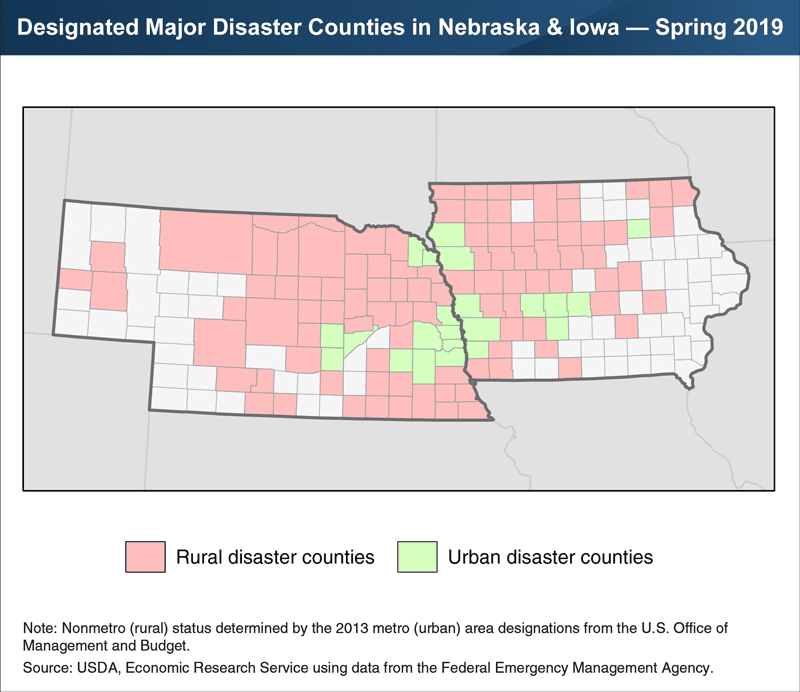How farmers in Iowa and Nebraska bounce back from this spring’s disastrous flooding could have a major impact on commodity prices and ag equipment and input sales. But the full effect will take time to measure.
In March 2019, historic flooding led to a major disaster declaration covering 121 counties in Iowa and Nebraska. According to USDA, the disaster declaration covers nearly half of the population in Iowa and 93 percent of the population in Nebraska. Of the 3.3 million people living in one of the designated disaster counties in 2017, over 37% (1.2 million) lived in rural areas.
In 2017, Iowa and Nebraska were the second and fourth ranked states, respectively, in agricultural cash receipts. Iowa also ranked second in total agricultural exports and was the top exporter of soybeans, pork, corn and feed grains. Nebraska led the Nation in beef and veal exports, and ranked third among states in corn, processed grain products and feed grain exports.
Based on the 2017 Census of Agriculture, designated disaster counties produced 66% of the market value of agricultural products sold in Iowa and 75% of those sold in Nebraska. Together, the designated disaster counties accounted for 9.2% of the total U.S. market value of agricultural products sold in 2017.





Post a comment
Report Abusive Comment